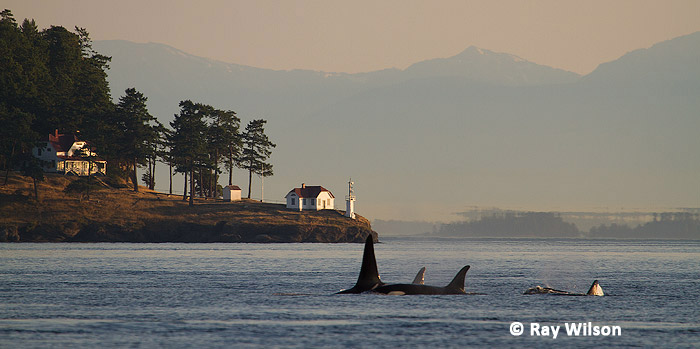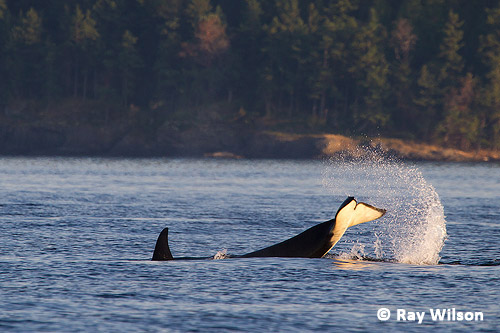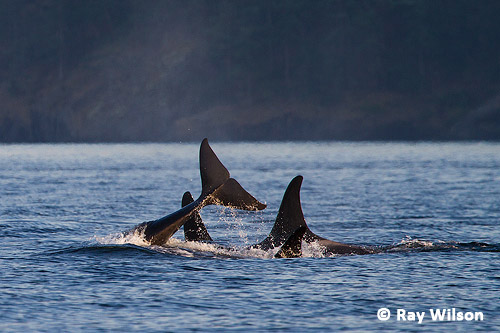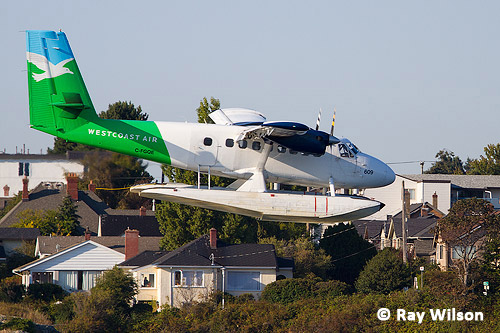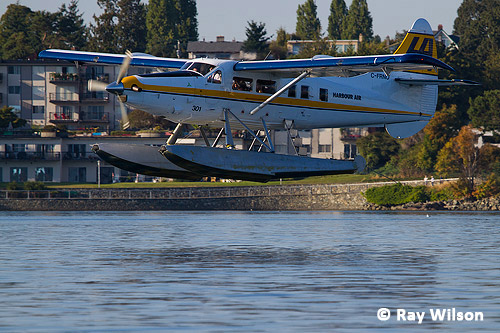
- Home
- Workshops / Tours
- Diary / Blog
- Galleries
- Foreign Trips
- Tasmania 2016
- NE Queensland 2016
- Western Alps 2016
- NE Spain 2016
- Australia's Wet Tropics 2015
- Australia's Top End 2015
- SW Australia 2015
- Switzerland 2015
- Andalucia 2015
- Belize 2015
- Australia 2014
- Switzerland 2014
- Belize 2014
- Bahama Islands 2014
- Switzerland 2013
- Ecuador 2012-2013
- Florida 2011-2012
- Vancouver Island 2011
- Australia 2010
- Peru 2008
- Bulgaria 2007
- Lesvos 2006
- California 2006
- New Zealand 2005
- Extremadura 2005
- Goa, India 2004
- The Gambia 2003
Vancouver Island, Canada
7th-25th September 2011
Victoria Killer Whale Trip
'Resident' Killer Whale pod offshore of Turn Point Lighthouse, Stuart Island, USA
Sightings of Killer Whales are practically guaranteed if you take a tour with one of the official tour operators who run out of Victoria harbour. Great Pacific Adventures were highly recommended to us by Lee's friends and collegues at the University of Victoria as being especially respectful of the Orcas and manned by qualified marine biologists who were very knowledgable about the biology of the Killer Whales. It was also recommended that we take an evening trip in the middle of the week as that is the quietest time and there would be more chance of us getting the whales to ourselves without a crowd of other tour boats around. It was definitely good advice.
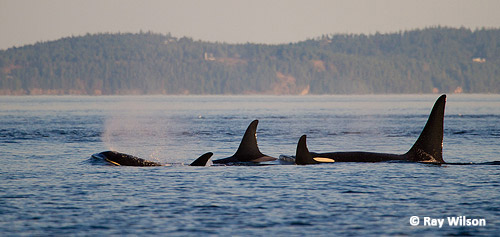
Resident Killer Whales (Orcinus orca)
On the evening of our tour, we were told the whales were last seen heading north up the Strait of Georgia and it took us about an hour at full throttle in a powerful aluminium-hulled zodiac to finally catch up with them in the strait between Moresby Island and Stuart Island (which is across the border and is part of the USA). We then spent the next 90 minutes gently floating on the mill-pond calm water surrounded by a large pod of Killer Whales indulging in a high degree of social interaction (possibly "celebrating" the arrival of newborn calf) whilst we listened to their excited vocalisations through the loud-speakers of the hydraphone Mick, our skipper, had lowered into the water.

male Resident Killer Whale (Orcinus orca)
The classification of the Killer Whale is currently under review and, according to a 2008 report by the IUCN, there is a high chance that it will be separated in to several distinct species, or at least subspecies. Those seen all year around in the coastal waters of southeastern Vancouver Island are of the form currently known as Resident Killer Whales.
Resident Killer Whale (Orcinus orca)
Resident Killer Whales can easily be separated from the migratory Transient Killer Whales seen in the north and west of the island by having black markings bisecting the pale patch behind the dorsal fin. Apart from their morphological differences they are also behaviourally distinct in that they eat a diet which almost exclusively consists of salmon, especially large Chinook Salmon.
Resident Killer Whales (Orcinus orca)
Genetic evidence from blood samples and biopsies has revealed the last time the two 'forms' interbred could be as long ago as 10,000 years.
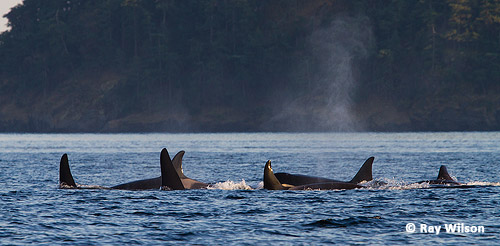
Resident Killer Whales (Orcinus orca)
seaplane coming into land at Victoria harbour
Victoria harbour is not only a busy port but also serves as an airport for regular seaplane services. Both scheduled passenger flights and sight-seeing tours operate from the harbour.
seaplane taking off from Victoria harbour
Ray Wilson owns the copyright of all images on this site.
They may not be used or copied in any form without prior written permission.
raywilsonphotography@googlemail.com
